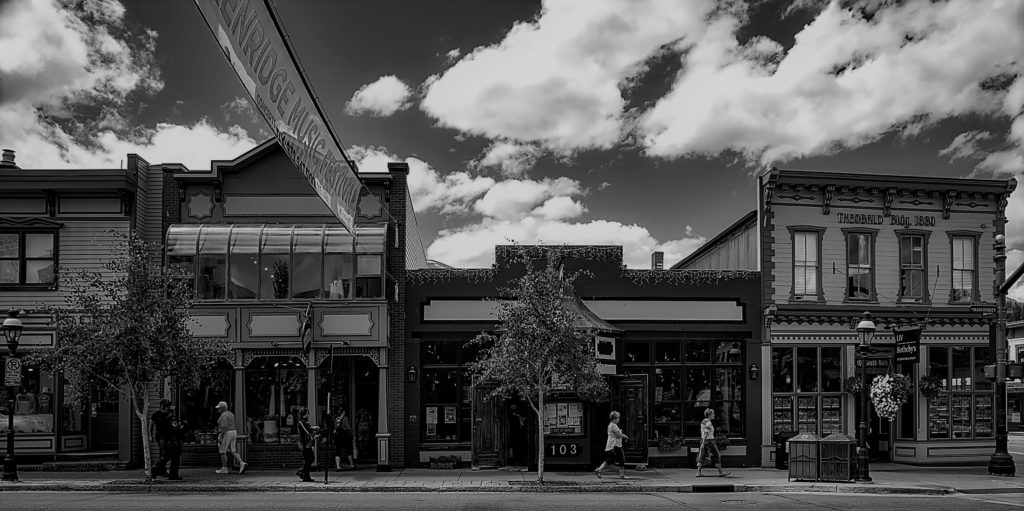No products in the cart.
Posts
10 Characteristics of Towns on the Upswing
Over the last four decades, the national narrative has focused on the hollowing out of American towns that were once hubs of farming or manufacturing. The narrative goes — as jobs dried up, hopelessness set in and left economic and social dysfunction in their wake.
But is that the REAL story? I’ve been reading an excellent book that turns this narrative on its head, instead observing that there is a resurgence in many towns and small cities, a resurgence that is not flashy, but is consistent and positive. It is built on the human energy of relationships, collaboration, and strong local leaders.
The book is “Our Towns, A 100,000 Mile Journey Into the Heart of America,” by James Fallows and Deborah Fallows. The story follows the Fallows over four years as they travel, in their small propeller airplane, from one small town to the next, talking to the new-age pioneers, listening to their stories, and making observations about what’s happening on the ground.
Here are the towns and small cities in the order the Fallows visited between 2013 and 2016: Sioux Falls, South Dakota; Rapid City, South Dakota; Holland, Michigan; Burlington, Vermont; Eastport, Maine; Greeneville, South Carolina; St. Marys, Georgia; Columbus, Mississippi; Caddo Lake, Louisiana-Texas; Columbus, Ohio; Louisville, Kentucky; Allentown, Pennsylvania; Duluth, Minnesota; Pittsburgh, Pennsylvania; Charleston, West Virginia; Guymon, Oklahoma; Ajo, Arizona; San Bernardino, California; Riverside, California; Redlands, California; Winters, California; Bend, Oregon; Redmon and Prineville, Oregon; Chester, Montana; The American Prairie Reserve, Montana; Dodge City, Kansas; Garden City and Spearville, Kansas; and, Erie, Pennsylvania.
Each chapter is written in a friendly, narrative style, not like a formal case study.
After telling the story of the individual towns, the authors identify 10 (and a half) characteristics they observed, almost all of which were in play in each of these towns. Not every community had experienced a full level of revitalization, but at the time of the visit, were moving in a positive direction. It seems to me that at least two of the 10 characteristics have a strong connection to our focus in this blog – Career Connected Learning.
The 10 characteristics are:
- People work together on practical local possibilities, rather than allowing bitter disagreements about national politics to keep them apart.
- You can pick out the local patriots (a small group of local leaders really matter).
- The phrase “public-private partnership” refers to something real.
On this note, several examples of what the authors called public-private partnerships had to do with education and worker training. The “private” side of this equation was getting employers involved, and the “public” side was tax-payer funded entities like the public-school system, community college, and in one case, a correctional institution.
One example was Technical Employment Training Inc, a non-profit business and education cooperative, in partnership with San Bernardino County Superintendent of Schools to provide manufacturing trades education and hands-on skills training to prepare them for a skilled workforce. Another chapter talks about the Christo Rey high school in Columbus, Ohio, which operates an innovative work-study program with over 100 private sector, non-profit and governmental employer partners. The school itself is private, but many of the employer partners are governmental and non-profit organizations. (See http://www.cristoreycolumbus.org/workstudy). As a side note, the documentation on the work-study program at the school’s website is an excellent resource for anyone interested in quality work-based learning.
- People know the civic story.
- They have downtowns.
- They are near a research university.
- They have and care about, a community college.
- They have distinctive, innovative schools.
Throughout the book, there are several other interesting examples of schools that had a strong employer presence as a partner. And even when the authors didn’t uncover it, I know of vibrant examples of CCL happening in places like Louisville, Kentucky, Erie, Pennsylvania, and a more recent work-in-progress, Rapid City, South Dakota. Sooner or later, I believe that any community that is serious about revitalization is going to discover some form of Career Connected Learning.
- They make themselves open (welcoming newcomers).
- They have big plans.
10 ½ was the observation that all of these towns also have good micro-breweries, which is a sign of entrepreneurship and the “hip” factor that attracts and keeps young professionals.
The book brings to life many of the concepts that I learned about in an earlier book by Jim Clifton, “The Coming Jobs War.” Jim Clifton, Chairman of Gallup, said that Gallup’s research always points to local leaders who really care about the community, and organize the social and economic forces to make positive change happen. In his words, “Don’t allow your local constituencies to look to Washington.” Clifton’s sentiments echo characteristic #1 of the Fallows’ list of common characteristics, the one about working together on “practical, local possibilities.” If we can avoid national political feuds as much as possible, people of good will can actually work together and get great things done.
Let’s start with something that makes eminent sense – Career Connected Learning.
Hans Meeder is President of NC3T, the National Center for College and Career Transitions (www.nc3t.com). NC3T provides planning, coaching, technical assistance and tools to help community-based leadership teams plan and implement their college-career pathway systems and strengthen employer connections with education.

